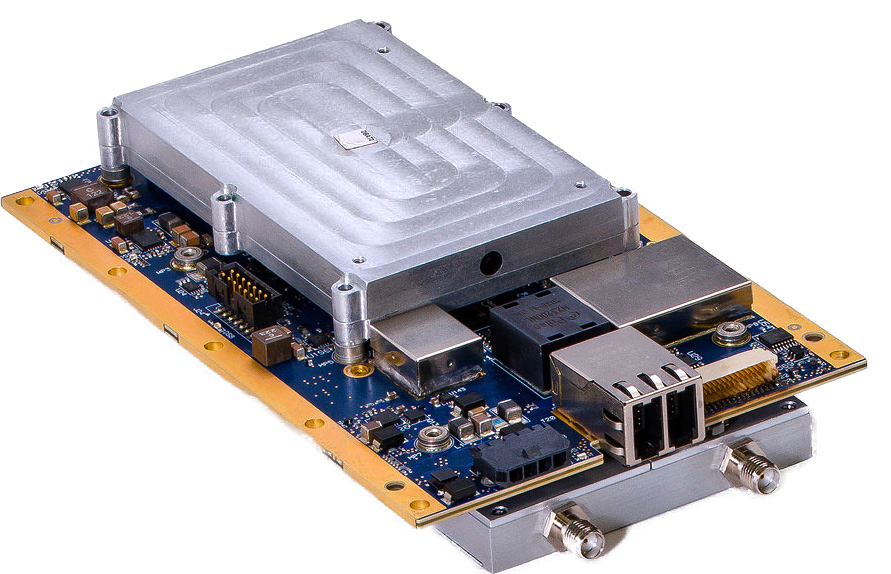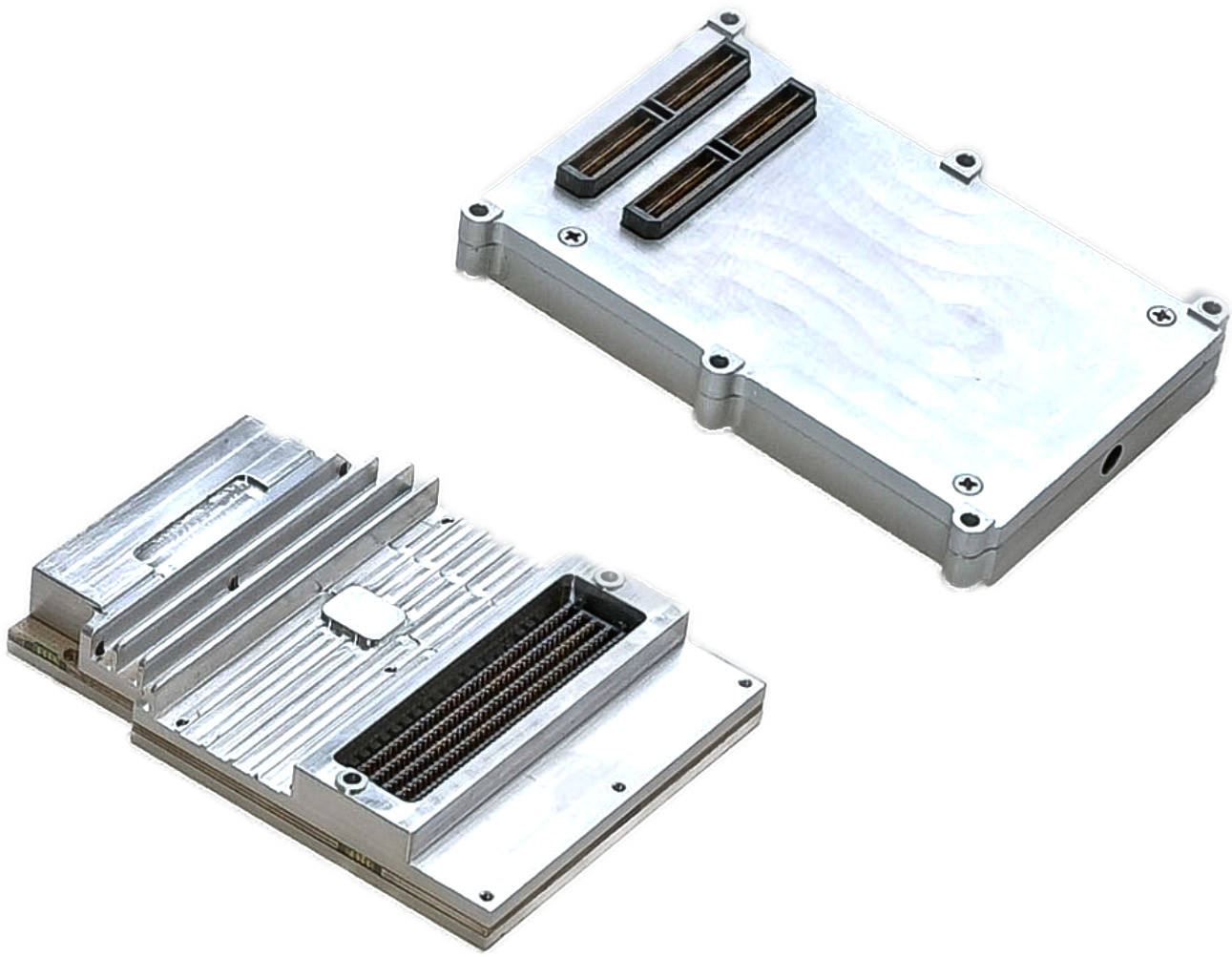Satellite systems continuously strive to reduce the size, weight and power (SWaP) consumption of remote terminals. The evolution of satellite terminals, from parabolic to flat-panel antennas, and the adoption of advanced meta-materials in electronically steerable antennas (ESAs), has led to significant progress in satellite system design.

Modem vendors have embraced advanced digital technologies such as application-specific integrated circuits (ASICs) and field-programmable gate arrays (FPGAs) system on a chip (SoC), resulting in the achievement of single- chip encryption for advanced military applications. These advancements have been made possible due to the benefits of Moore’s Law, which inherently aids in improving SWaP.
While antennas and modems have experienced remarkable advancements, radio frequency (RF) components, which are fundamental to satellite terminal design, have lagged behind in terms of innovation.
Satellite terminals need to operate on multiple satellite bands, such as X-, Ku- and Ka-. Traditionally, generic modems have used an L-band interface and relied on the block upconverter (BUC) and low-noise block (LNB) for frequency conversion. However, the effectiveness of the intermediate L-band interface is currently under reconsideration in terminal design. Analog systems, unlike digital systems, do not benefit from Moore’s Law and present challenges when it come to miniaturization.
The interference caused by densely packed components and the complexity of RF circuit design limit the potential for size reduction in analog systems.
In contrast, the latest modem designs have successfully shrunk the digital portion to a size no larger than a business card. However, the L-band RF section remains larger in size and consumes a significant amount of power. Therefore, eliminating the intermediate RF circuitry between the modem and RF transceiver (RFT) would be a major breakthrough in enhancing satellite terminal SWaP.
The proposed solution to address the SWaP challenges is the implementation of an all-digital interface between the modem and the RFT.
Extensive research has been conducted on digital intermediate interfaces, but commercially available modems, LNB downconverters and digital RF transmitters are still in the early stages of development.

The achievement of plug-and-play equipment for terminal development remains a challenging task that necessitates close collaboration among all stakeholders involved.
The transition to digital intermediate frequency terminals has compatibility issues at the physical layer.
The digitized RF signal requires a significant amount of data bandwidth, and although interface standards, such as VITA 49.2, exist, several aspects of these standards are subject to interpretation.
Notably, time synchronization and support for multiple high-speed interfaces, such as peripheral component interconnect express (PCIe) and Serial RapidIO, need to be addressed to ensure seamless compatibility and integration.
To facilitate the transition to digital intermediate frequency terminals, modems are being designed with multiple levels of modularity.
 Photo of two pieces of iDirect Government’s 450mp multi-waveform, multiorbit software defined radio (SDR) modem, courtesy of the company.
Photo of two pieces of iDirect Government’s 450mp multi-waveform, multiorbit software defined radio (SDR) modem, courtesy of the company.
The first level involves developing a satellite modem that is compatible with the existing L-band intermediate frequency. This modem can be deconstructed and implemented in various ways to accommodate different terminal designs.
In the second level of modularity, the modem’s digital and analog sections are separated, allowing terminal designers to develop their carrier boards. This configuration provides flexibility for integrating antenna control units, beacon receivers and single-board computers and also requires the addition of intelligence to enable automatic calibration and verification of signal quality. This intermediate step serves as an ideal configuration until fully digitalized RFT becomes widely available.
The third level of modularity aims to eliminate the need for the intermediate L-band and transition to a fully digital interface. At this stage, the SWaP of the satellite modem is reduced by more than half.
The modem communicates with the RFT through a digitized waveform, resulting in improved efficiency and reduced power consumption. This transition not only offers SWaP advantages but enables the evolution of the entire terminal configuration.
With a digital RF interface, it becomes possible to physically separate the modem from the antenna and replace the intermediate frequency link (IFL) cable with Cat 6 Ethernet, allowing for greater physical separation with reduced signal attenuation.

The shift toward a purely digital realm for the modem opens possibilities for waveform virtualization. In this context, the modems transform into true software-defined radios (SDRs).
When considering SWaP from a broader perspective, merely miniaturizing a modem terminal by 30% does not adequately address the SWaP challenges that end-users face when multiple terminals are required to support various mission-specific waveforms.
Porting waveforms to different modems is a complex task that often proves challenging. However, by decoupling the analog from the digital domain or eliminating intermediate frequencies altogether, virtualizing and porting waveforms become simpler and more efficient.
Significant advancements have been made in antenna and modem technologies to reduce SWaP in satellite terminal design. However, the RF component innovation has remained relatively stagnant.
The adoption of an all-digital interface between the modem and RFT can be a solution to address the remaining SWaP challenges.
Collaboration among stakeholders, including modem vendors, LNB manufacturers and digital RF transmitter developers, is crucial to the development of commercially available modems, LNBs and digital RF transmitters for digital intermediate frequency terminals.

The transition to digital interfaces offers SWaP benefits as well as unlocks opportunities for waveform virtualization and portability, enabling greater flexibility and efficiency in satellite systems.
idirectgov.com

Karl Fuchs is the Senior Vice President of Technology at iDirect Government (iDirectGov), a U.S. corporation that is a trusted partner of the U.S. government and has been for more than 18 years. All of the company’s employees are U.S. citizens, with a third being U.S. military veterans with more than 60% holding U.S. security clearances.
Fuchs leads iDirectGov’s team of federal systems engineers and serves as chief architect for new product integration and specialized technology, including transmission security (TRANSEC), Communication Signal Interference Removal (CSIR™) anti-jam technology and Open Antenna Modem Interface Protocol (OpenAMIP). All Defense-grade products sold by iDirectGov are designed, developed, assembled, programmed and verified within the United States.
Fuchs has more than 20 years of experience in the areas of technology and the federal government and is a Senior Contributor to MilsatMagazine.
Contact Karl at kfuchs@idirectgov.com


